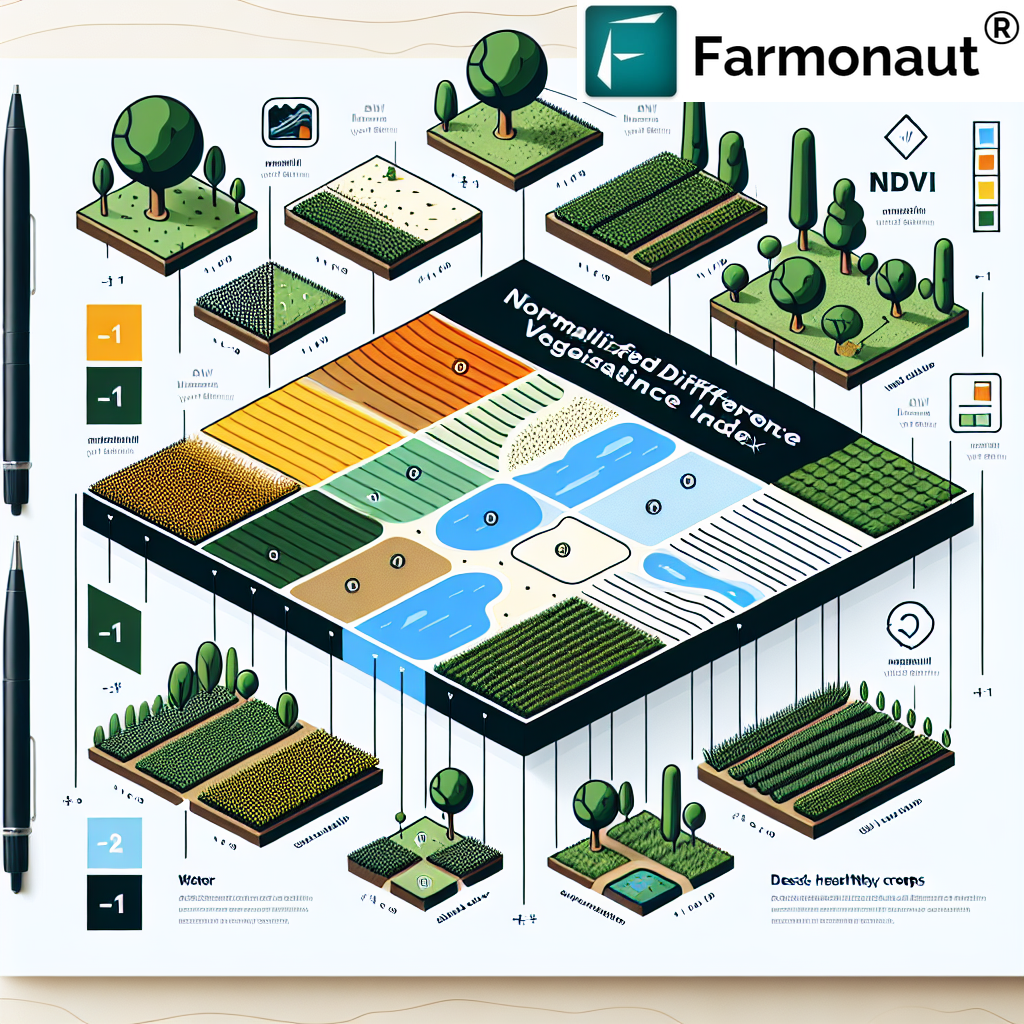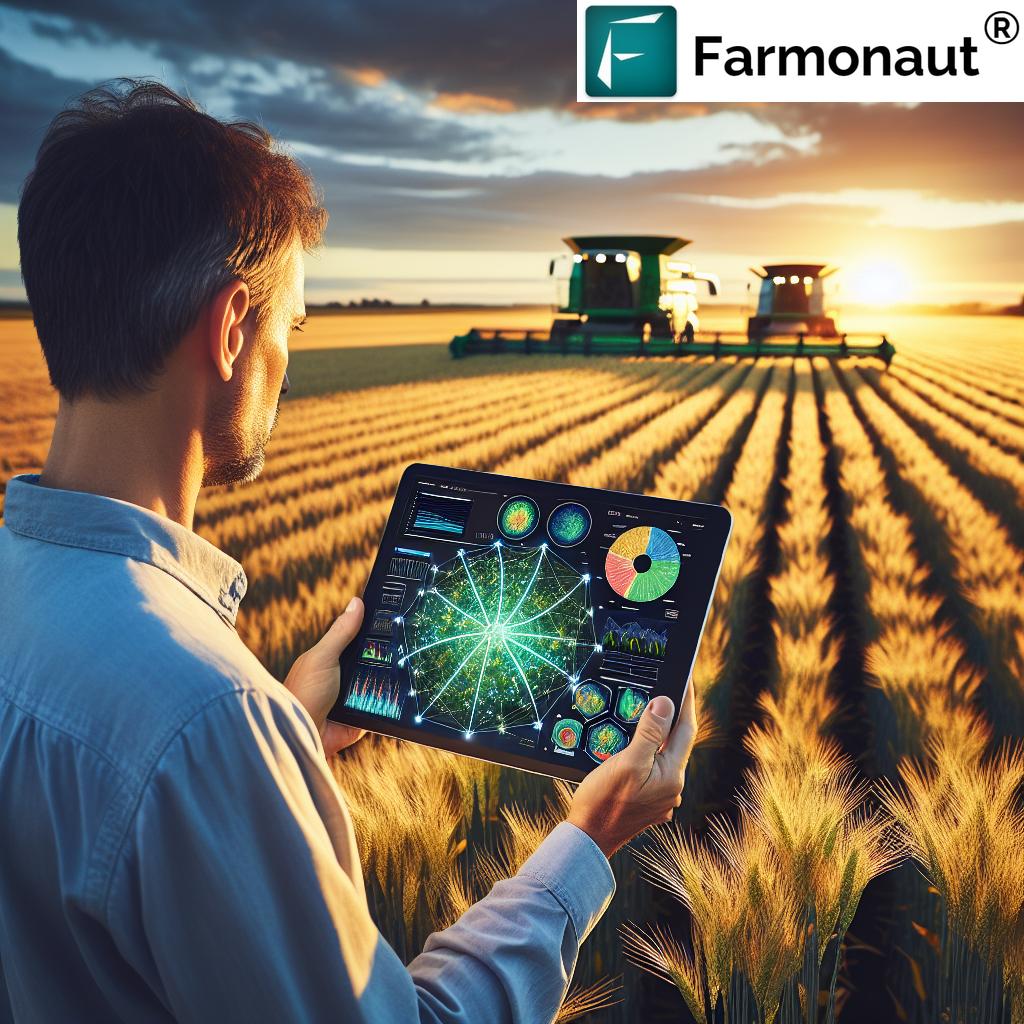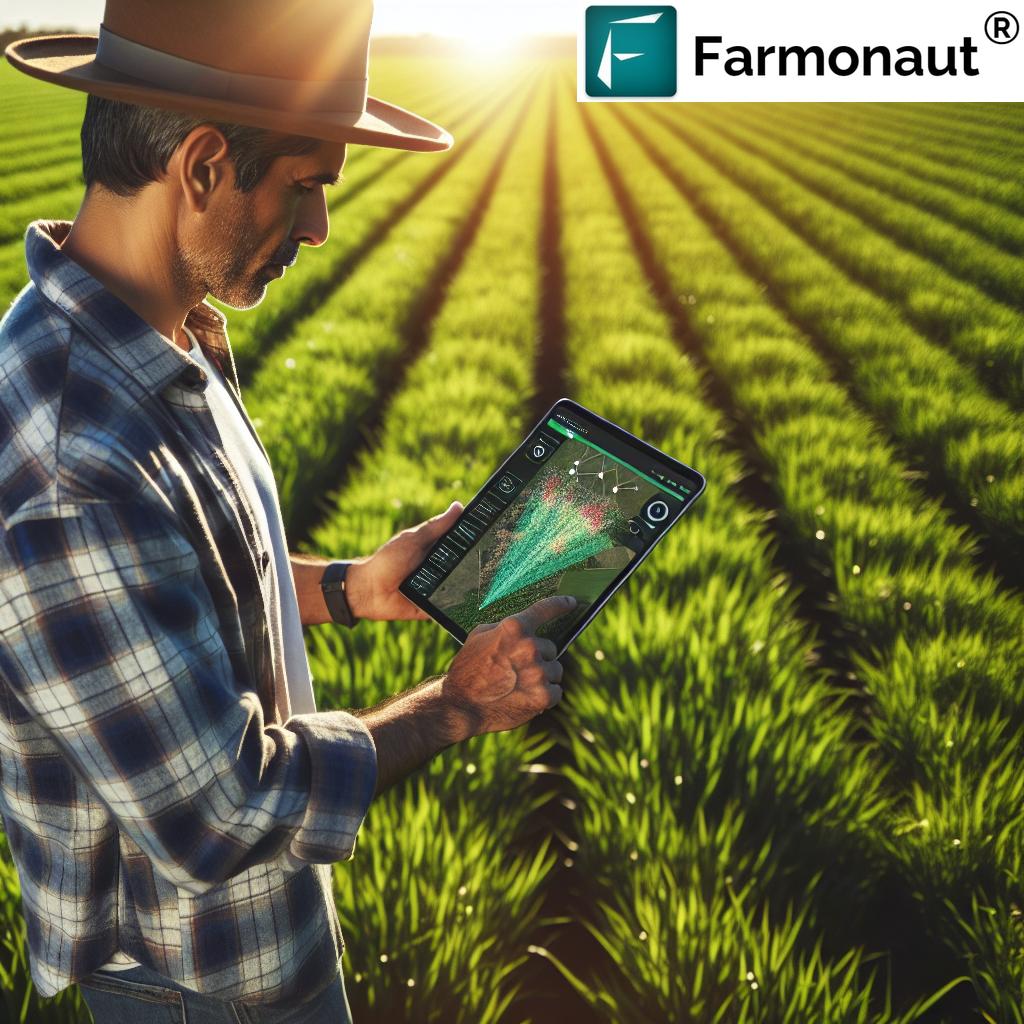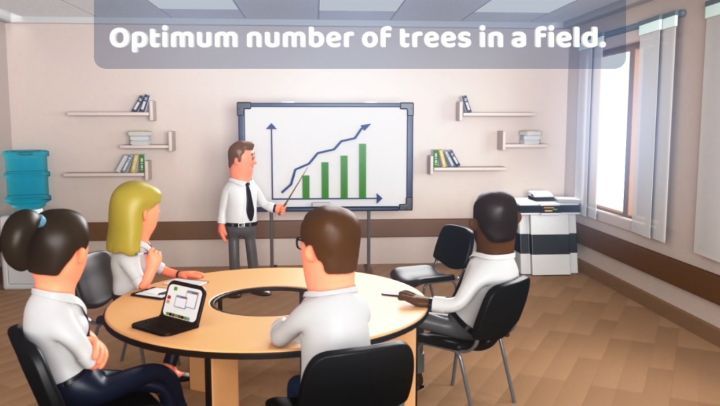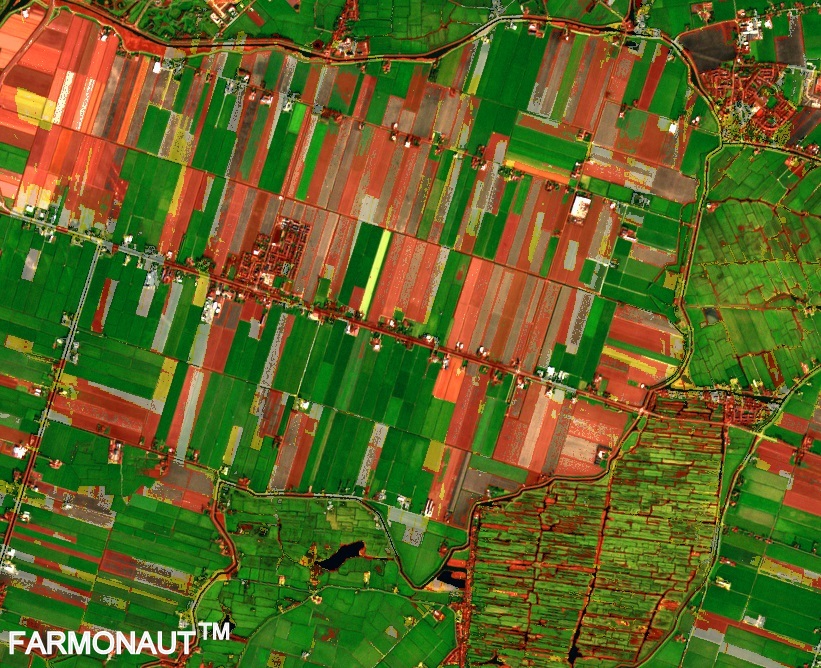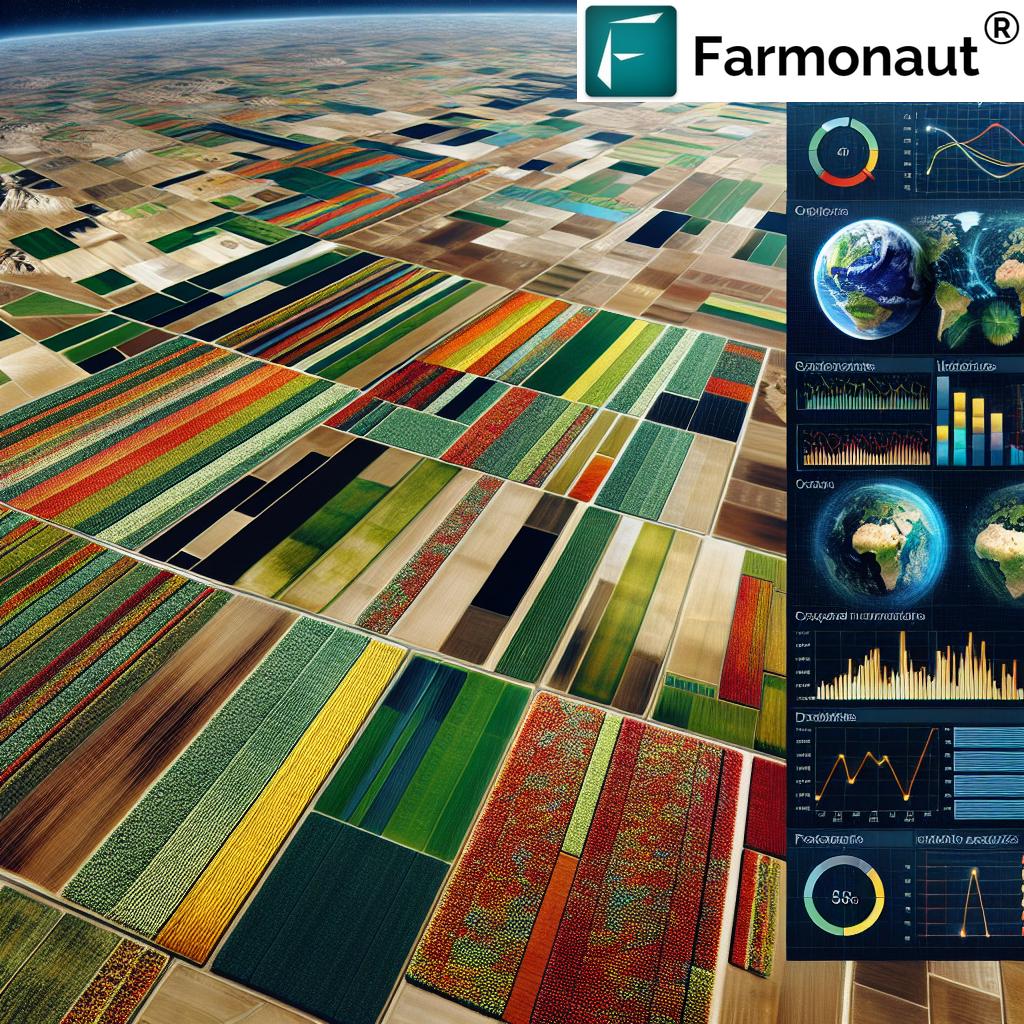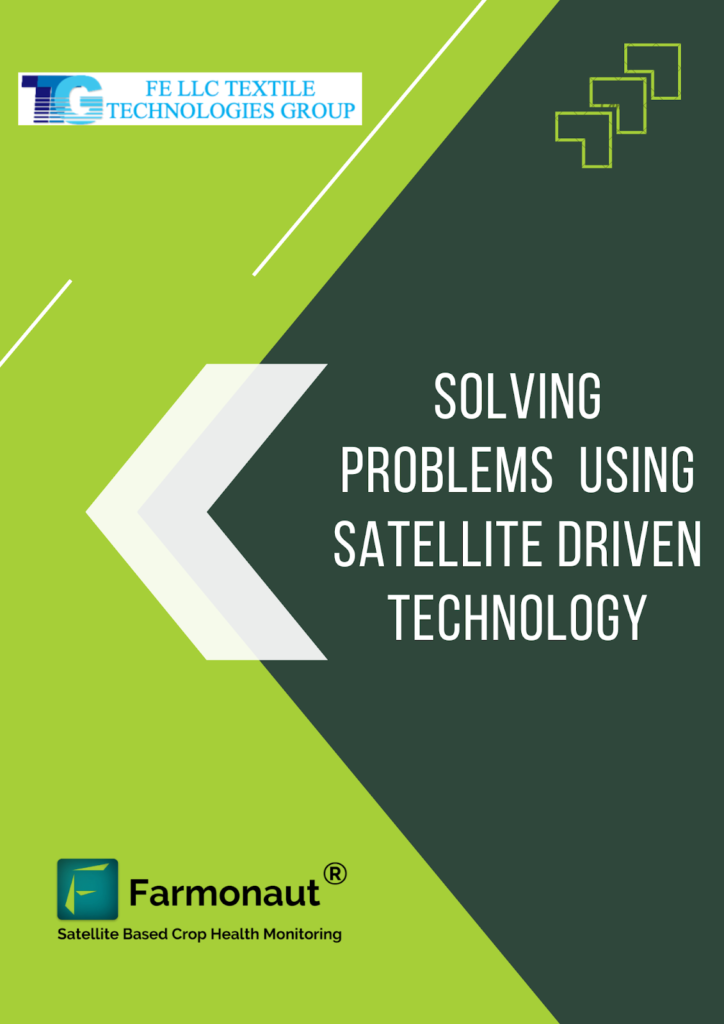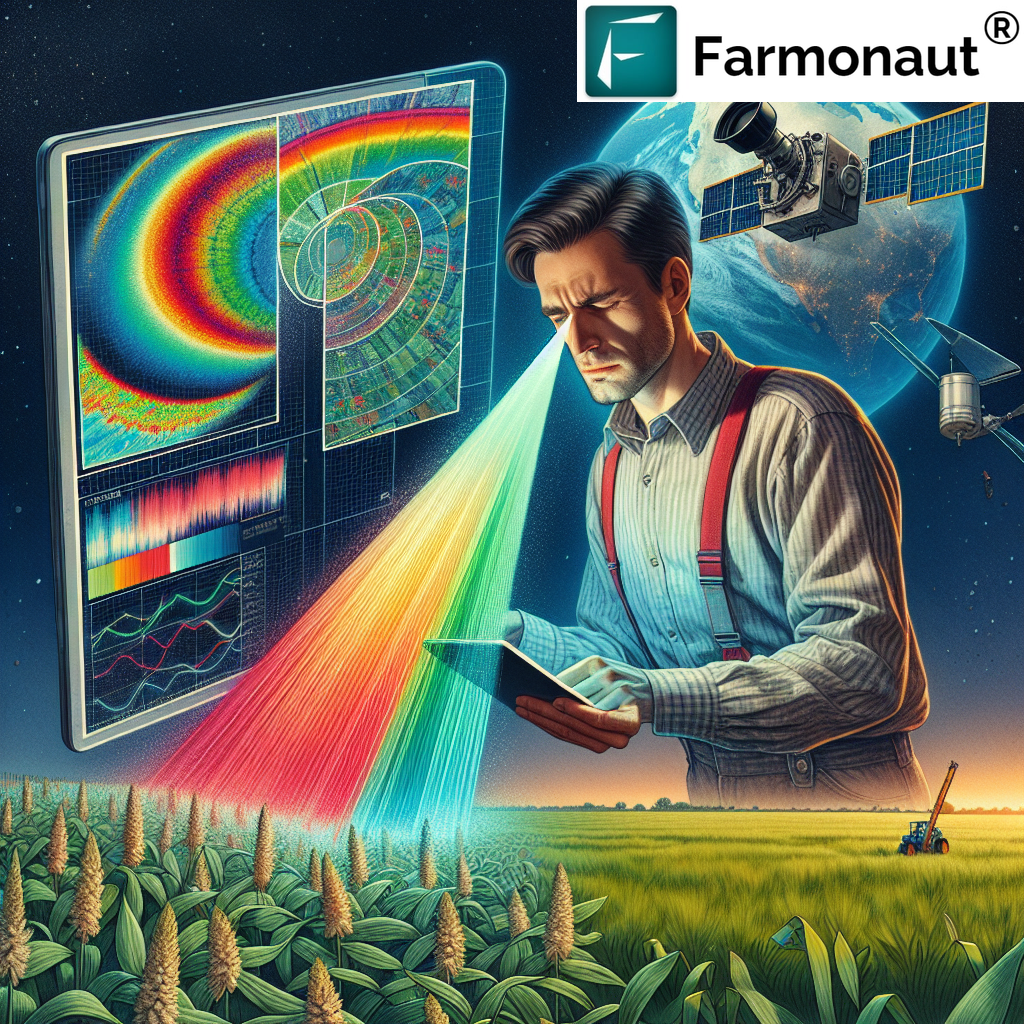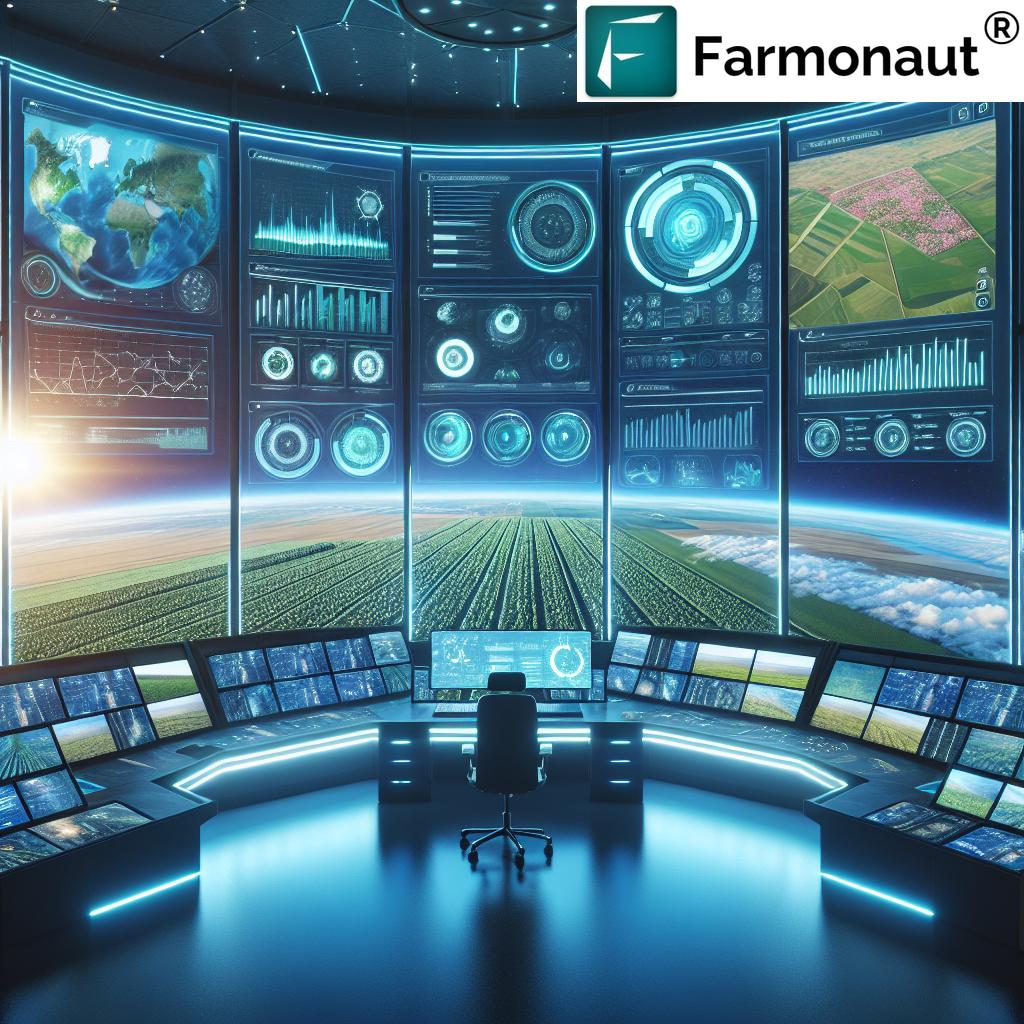Revolutionizing Agriculture: Farmonaut’s Satellite-Based Crop Health Monitoring
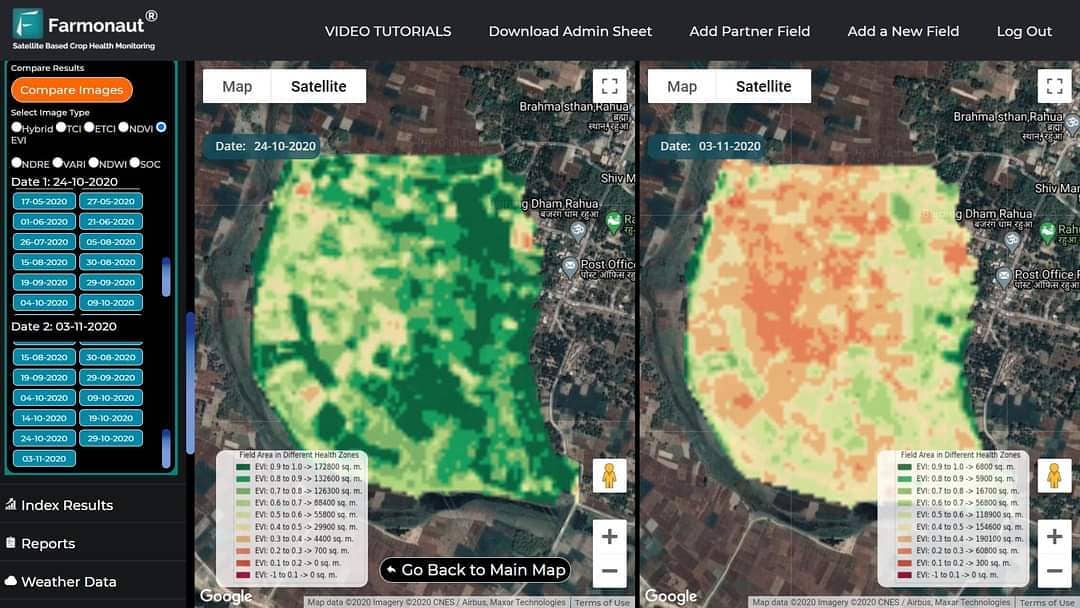
At Farmonaut, we’re excited to share our latest insights on satellite-based crop health monitoring and its impact on modern agriculture. Our recent observations in Saharsa, Bihar, have provided valuable data on paddy harvesting and overall crop conditions. In this comprehensive blog post, we’ll dive deep into the world of precision agriculture, exploring how our cutting-edge technology is transforming farming practices and enhancing crop yields.
Table of Contents
- Introduction to Farmonaut’s Satellite-Based Crop Monitoring
- Recent Observations in Saharsa, Bihar
- Understanding EVI (Enhanced Vegetation Index)
- The Importance of Soil Organic Carbon
- Farmonaut’s Comprehensive Farm Management Solutions
- Comparing Satellite, Drone, and IoT-Based Farm Monitoring
- The Future of Precision Agriculture
- How to Get Started with Farmonaut
- FAQs
1. Introduction to Farmonaut’s Satellite-Based Crop Monitoring
At Farmonaut, we’ve pioneered a revolutionary approach to agriculture by harnessing the power of satellite technology. Our satellite-based crop health monitoring system provides farmers and agribusinesses with real-time, accurate data on crop conditions, soil health, and environmental factors. This technology is a game-changer in the world of precision agriculture, enabling informed decision-making and optimized resource management.
Our platform is designed to be user-friendly and accessible, available on Android, iOS, and as a web application. This multi-platform approach ensures that farmers can access crucial information about their crops anytime, anywhere.
2. Recent Observations in Saharsa, Bihar
Our recent focus has been on one of our extensive farming hubs in Saharsa, Bihar. Over the past two weeks, we’ve observed significant developments in paddy harvesting and overall crop health. Here’s what our satellite data has revealed:
- Approximately 50% of the paddy crop has been harvested
- Instances of water logging and fungus infestation were detected
- Despite these challenges, the overall crop condition remained good as harvesting began
This data highlights the importance of continuous monitoring and rapid response to changing conditions. By providing farmers with up-to-date information, we enable them to address issues promptly and maintain optimal crop health throughout the growing season.
3. Understanding EVI (Enhanced Vegetation Index)
One of the key metrics we use in our crop health monitoring is the EVI (Enhanced Vegetation Index). EVI is an advanced measure of vegetation health and density, offering several advantages over traditional indices like NDVI (Normalized Difference Vegetation Index).
What is EVI?
EVI is a satellite-derived index that quantifies vegetation greenness. It’s particularly useful for areas with dense vegetation, as it can distinguish between different levels of canopy growth more effectively than NDVI.
How EVI Works
EVI uses the following formula:
EVI = G * ((NIR – Red) / (NIR + C1 * Red – C2 * Blue + L))
Where:
- NIR = Near-infrared reflectance
- Red = Red reflectance
- Blue = Blue reflectance
- G = Gain factor
- C1, C2 = Coefficients for atmospheric resistance
- L = Canopy background adjustment
Benefits of Using EVI
- Improved sensitivity in high biomass regions
- Reduced atmospheric influences
- Better canopy background signal decoupling
- More accurate representation of plant phenology
In our recent observations in Saharsa, the EVI data provided a clear picture of crop health variations from October 24, 2020, to November 3, 2020. This information is crucial for farmers to make informed decisions about harvesting schedules and post-harvest management practices.
4. The Importance of Soil Organic Carbon
Soil organic carbon (SOC) is a critical component of soil health and plays a vital role in sustainable agriculture. At Farmonaut, we recognize the significance of SOC and have integrated its monitoring into our comprehensive farm management solutions.
Why Soil Organic Carbon Matters
- Enhances soil structure and water retention
- Improves nutrient availability and cycling
- Supports beneficial soil microorganisms
- Contributes to carbon sequestration, mitigating climate change
- Increases soil fertility and crop productivity
Farmonaut’s Approach to SOC Monitoring
Once the paddy harvest is complete in Saharsa, our next step will be to capture the soil organic carbon content of the bare land. This process involves:
- Utilizing satellite imagery to identify areas of potential SOC depletion
- Conducting priority soil testing in identified locations
- Analyzing results to provide targeted recommendations for soil health improvement
- Monitoring SOC levels over time to track the effectiveness of management practices
By focusing on SOC, we help farmers maintain long-term soil fertility, reduce the need for synthetic inputs, and contribute to more sustainable agricultural practices.
5. Farmonaut’s Comprehensive Farm Management Solutions
At Farmonaut, we offer a suite of advanced tools and technologies designed to revolutionize farm management. Our solutions go beyond simple crop monitoring, providing a holistic approach to precision agriculture.
Key Features of Farmonaut’s Platform
- Real-time Crop Health Monitoring: Utilizing satellite imagery and advanced algorithms to provide up-to-date information on crop conditions.
- Jeevn AI Advisory System: Our AI-driven tool delivers personalized farm advice, weather forecasts, and expert crop management strategies.
- Blockchain-Based Traceability: Ensuring transparency and security in agricultural supply chains.
- Fleet and Resource Management: Optimizing logistics and machinery usage for improved operational efficiency.
- Carbon Footprinting: Helping agribusinesses monitor and reduce their environmental impact.
These features work in harmony to provide farmers and agribusinesses with a comprehensive toolkit for modern, efficient, and sustainable farming practices.
Integration with Financial Services
We’ve also partnered with financial institutions to provide satellite-based verification for crop loans and insurance. This integration:
- Streamlines the loan approval process for farmers
- Reduces the risk of fraudulent insurance claims
- Improves access to financing for agricultural operations
6. Comparing Satellite, Drone, and IoT-Based Farm Monitoring
While various technologies are available for farm monitoring, satellite-based systems like Farmonaut offer distinct advantages. Here’s a comparison of how our satellite system stacks up against drone and IoT-based monitoring:
| Feature | Farmonaut Satellite System | Drone-Based Monitoring | IoT-Based Monitoring |
|---|---|---|---|
| Coverage Area | Large scale (regional to global) | Limited (local) | Very limited (field-specific) |
| Frequency of Data Collection | Regular (every few days) | On-demand (requires manual operation) | Continuous |
| Initial Setup Cost | Low | High | Medium to High |
| Maintenance Requirements | Minimal | Moderate | High |
| Data Processing | Automated and cloud-based | Often requires manual processing | Automated but may require local infrastructure |
| Scalability | Highly scalable | Limited scalability | Moderate scalability |
| Weather Independence | Can operate in most weather conditions | Limited by weather conditions | Generally weather-independent |
| Regulatory Compliance | Minimal regulatory hurdles | Subject to aviation regulations | May require permissions for sensor placement |
As the table illustrates, Farmonaut’s satellite-based system offers unparalleled coverage, cost-effectiveness, and scalability, making it an ideal choice for modern precision agriculture.
7. The Future of Precision Agriculture
The agricultural sector is on the cusp of a technological revolution, and precision agriculture is at the forefront of this transformation. At Farmonaut, we’re continually innovating to stay ahead of the curve and provide farmers with the most advanced tools available.
Emerging Trends in Precision Agriculture
- AI and Machine Learning: Advanced algorithms will provide even more accurate predictions and recommendations.
- Integration of Multiple Data Sources: Combining satellite data with ground sensors and weather stations for comprehensive insights.
- Automated Farming Systems: Increased use of robotics and autonomous vehicles in farming operations.
- Blockchain for Supply Chain Transparency: Enhanced traceability from farm to consumer.
- Precision Livestock Farming: Applying precision agriculture principles to animal husbandry.
As we look to the future, Farmonaut is committed to staying at the forefront of these developments, continually enhancing our platform to meet the evolving needs of farmers and agribusinesses worldwide.
8. How to Get Started with Farmonaut
Are you ready to revolutionize your farming practices with Farmonaut’s cutting-edge technology? Getting started is easy:
- Download the App: Visit the Google Play Store or Apple App Store to download the Farmonaut app.
- Create an Account: Sign up for a free account to explore our basic features.
- Subscribe to a Plan: Choose a subscription plan that best fits your needs using our easy payment system
- Add Your Fields: Input your field locations to start receiving satellite data.
- Explore Features: Familiarize yourself with our crop health monitoring, AI advisory system, and other tools.
- Integrate with Your Operations: Use our API to integrate Farmonaut data into your existing farm management systems.
For developers interested in leveraging our satellite and weather data, check out our API documentation.
9. FAQs
Q: How often is satellite data updated on Farmonaut?
A: Our satellite data is typically updated every 3-5 days, depending on the specific location and satellite coverage.
Q: Can Farmonaut help with crop insurance claims?
A: Yes, our satellite-based verification can provide valuable data to support crop insurance claims, making the process more efficient and accurate.
Q: Is Farmonaut suitable for small-scale farmers?
A: Absolutely! We offer affordable plans tailored to small-scale farmers, making precision agriculture accessible to all.
Q: How accurate is the EVI data in predicting crop health?
A: EVI is highly accurate in assessing vegetation health. However, we always recommend combining satellite data with ground-level observations for the most comprehensive understanding of crop conditions.
Q: Can Farmonaut help with organic farming practices?
A: Yes, our soil health monitoring and organic carbon content analysis are particularly valuable for organic farmers looking to optimize their soil management practices.
Conclusion
At Farmonaut, we’re passionate about empowering farmers with the tools and insights they need to thrive in the modern agricultural landscape. Our satellite-based crop health monitoring system, combined with advanced features like EVI analysis and soil organic carbon monitoring, represents the cutting edge of precision agriculture.
As we continue to innovate and expand our services, we remain committed to our mission of making advanced agricultural technology accessible to farmers worldwide. By harnessing the power of satellites, AI, and blockchain, we’re not just monitoring crops – we’re cultivating a more sustainable and productive future for agriculture.
Join us on this exciting journey towards smarter, more efficient farming. Visit Farmonaut.com today to learn more and start revolutionizing your agricultural practices!


